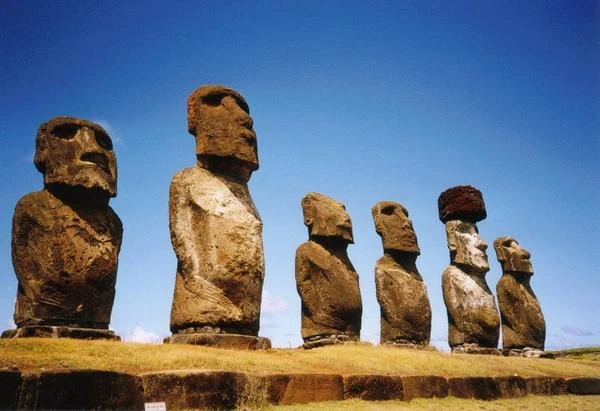
Easter Island, particularly isolated, is a small island (162 km2) in the Pacific, 3,700 km from the Chilean coast and 4,000 km from Tahiti. The first human population of the island erected hundreds of statues weighing several dozen tons, the Moais, between the years 800 and 1200. This island, inhabited by 4,000 people, was discovered by the Dutchman Jakob Roggeveen (1659-1729) on Easter Day, April 5, 1722.
Easter Island is famous for its archaeological heritage and megalithic remains (about 900 basalt statues, 400 of which are unfinished). The island has little forest, but the first European explorers describe the presence of wood and undergrowth. Archaeological research proves that several tree species completely disappeared or nearly disappeared from the 1500s-1600s.
This habitable land, the most isolated in the world, is an example of the self-destruction of a society. For a long time, scientists wondered how, on an island covered with meadows and without trees, the Polynesians could have erected these enormous statues and why most of them were demolished.
In fact, at that time, this island had forests and large trees, but the inhabitants gradually cut them down until the last one to develop their society. Without wood or rope, the statues were abandoned, and hundreds remained unfinished. The resulting soil erosion, lack of resources, and clan wars eventually destroyed this society. This collapse is an example of the total depletion of resources on an isolated territory and marks the abrupt halt of a society's development.
The same is true on our planet, where we are trapped. The depletion of resources, faster than their renewal, is a risk that threatens all of humanity. Human expansion could well come to a halt as soon as the numerous resources we draw from the planet become insufficient.
N.B.:
In 1798, Thomas Malthus (1766-1834) noted that living species tend to grow exponentially, while resources cannot grow at the same rate. He deduced that a demographic catastrophe is inevitable.